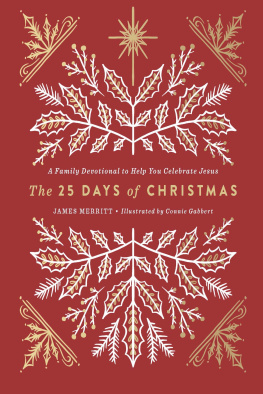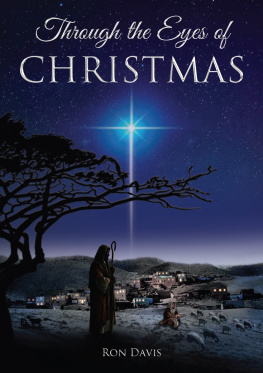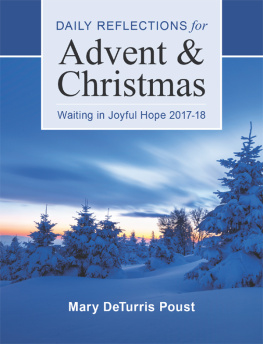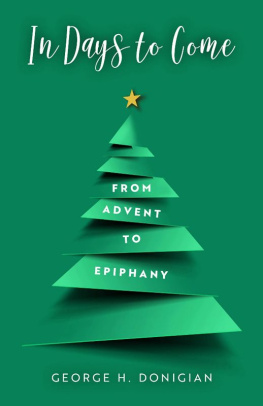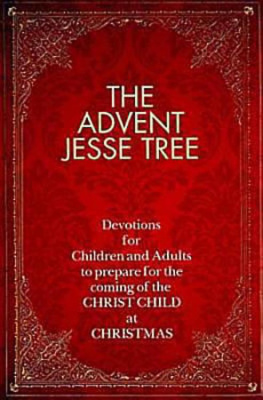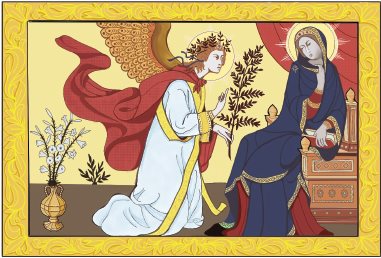Contents
Page List
Guide

AN ADVENT BOOK OF DAYS
AN ADVENT BOOK OF DAYS
Meeting the Characters of Christmas
BIBLE HISTORY LEGEND FAITH
Gregory K. Cameron
2021 First Printing This Edition
An Advent Book of Days: Meeting the Characters of Christmas
Copyright 2021 by Gregory K. Cameron
ISBN 978-1-64060-589-3
The Author has asserted his right to be identified as the Author of this Work.
First published in 2021 by the Canterbury Press Norwich, London, UK. Canterbury Press is an imprint of Hymns Ancient & Modern Ltd (a registered charity), Norfolk, UK.
The Paraclete Press name and logo (dove on cross) are trademarks of Paraclete Press
Library of Congress Cataloging-in-Publication Data
Names: Cameron, Gregory, author.
Title: An Advent book of days : meeting the characters of Christmas / Gregory K. Cameron.
Description: Brewster, Massachusetts : Paraclete Press, 2021. | First published in 2021 by the Canterbury Press Norwich, London, UK. Canterbury Press is an imprint of Hymns Ancient & Modern Ltd (a registered charity), Norfolk, UK. | Summary: 25 daily readings, beautifully illustrated by the author, each exploring the scripture and history of an integral part of the Christmas story-- Provided by publisher.
Identifiers: LCCN 2021015006 | ISBN 9781640605893 (hardcover)
Subjects: LCSH: Jesus Christ--Nativity--Meditations. | Bible. Gospels--Biography. | Advent--Meditations. | Christmas--Meditations. | BISAC: RELIGION / Holidays / Christmas & Advent
Classification: LCC BT315.3 .C35 2021 | DDC 232.92--dc23
LC record available at https://lccn.loc.gov/2021015006
10 9 8 7 6 5 4 3 2 1
All rights reserved. No portion of this book may be reproduced, stored in an electronic retrieval system, or transmitted in any form or by any meanselectronic, mechanical, photocopy, recording, or any otherexcept for brief quotations in printed reviews, without the prior permission of the publisher.
Published by Paraclete Press
Brewster, Massachusetts
www.paracletepress.com
Printed in the United Kingdom
CONTENTS
For Kenneth, Irene,
Clare,
Ben, Will and Edward,
my chief supporters and encouragers
INTRODUCTION
One of the most familiar scenes at Christmas is of the stable at Bethlehem, whether it be as a crib at home or in church, or perhaps acted out by the children in the local school or church.
St Francis is attributed with the invention of the Christmas crib scene, but every nativity scene assembles a group of characters, some ancient and some modern, which do not necessarily have an obvious similarity to the story of the birth of Jesus as it is told in either of its two versions, in the Gospel according to Matthew and the Gospel according to Luke. Indeed, even these two Gospels offer very different accounts of the birth of Jesus, with different casts, albeit that the presence of the Holy Family remains at the heart of the drama.
Down through the centuries, new characters such as St Nicholas have joined the story and the celebration of Christmas and, in addition, new stories have been told or elaborated about the characters already there.
This book, which draws on the traditions of the medieval books of hours that brought together prayers for the noble patrons who commissioned them, is a Book of Days, numbering the days from the beginning of December until Christmas. This does not entirely match the season of Advent, which is calculated in a different way, but each chapter of this book can be assigned to one day in the month of December, from the 1st to the 25th. The intention is to revisit each of the characters that make up our Christmas story, and to discover what we know about them, and the stories we tell about them.
Each chapter offers an exploration that draws upon the Scriptures, history and legend in respect of the character of the day one of the people, places or things that have become integral to the Christmas story as it is commonly received. I have augmented this with my own illustrations that I have adapted from some of the most famous works of art depicting the characters of Christmas at different periods of history. This book also aims to provide some spiritual food to nurture readers through the journey of Advent.
There is no absolute reason why these reflections need to be tied to the calendar for December. The twenty-five chapters investigating the Christmas story could be used at other times in taking us on the journey to Bethlehem and offering a meeting with the characters who populate the nativity narrative. It is my hope that these reflections, whenever they are read, will help us to discover new depths in the Christmas story, to deepen our faith, and perhaps even to learn something new or unexpected; because over two thousand years, the story of Christmas has become filled with unexpected delights arising from Scripture, history, legend and faith.
+Gregory Llanelwy
Gregory K. Cameron, Bishop of St Asaph
DAY 1
ANNUNCIATION
The story of the birth of Jesus does not start at Christmas, or even with Advent. Instead it begins in the spring of each year with an announcement. The date of Lady Day, 25 March, is the first day of the year in the old calendar and, for Christians, the Feast of the Annunciation. For obvious reasons, it is exactly nine months before Christmas Day. However, attention focuses on two characters who are central to the Christmas story we are invited to reflect upon a girl who is to become a mother, Mary, and a creature of the supernatural, the Archangel Gabriel.
I
Luke is the only Gospel to tell us the inside story of the way in which Mary discovered her pregnancy. While Matthew tells the story from Josephs point of view, Luke tells the story from the point of view of Jesus mother indeed, there is an ancient tradition that Luke had actually met Mary, and listened to her memories of Jesus birth. For Luke, the Archangel Gabriel is sent from God in the sixth month (of another pregnancy, that of Elizabeth) to announce that Mary is to bear Jesus, who will be great, and will be called the Son of the Most High (Luke I.32ff). Like Matthew, Luke clearly portrays Mary as a virgin at this stage of the story, despite her betrothal to Joseph, so Marys reaction is one of dismay: How can this be? Reassured of Gods direct action to bring these things to pass, Mary makes the boldest of decisions: I am the Lords servant may it be as you have said (Luke 1.38).
II
It used to be believed that 25 December was chosen by the early Christians as the date for Christmas because they wished to appropriate the pagan feast day of Sol Invictus, the Unconquered Sun. In fact, the evidence is shaky, and the possibility is that the reverse is true and 25 December was chosen as a feast for Sol Invictus in order to compete with the Christian celebration of Christmas, while linking in to the Winter Solstice, the shortest day of the year, which fell a few days earlier, and when, to some minds, night fails to conquer the power of the day, and the days start to grow longer again.


